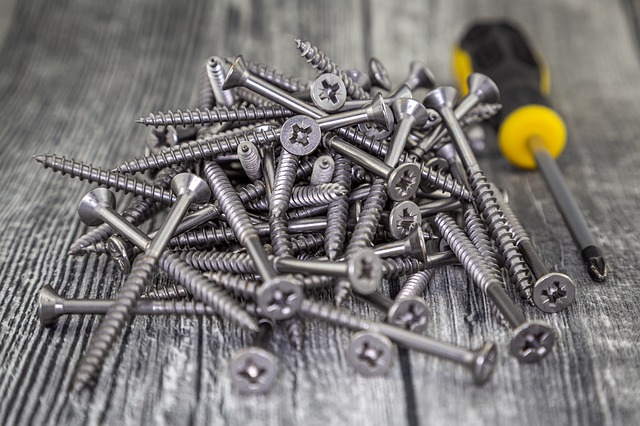How to remove a stripped screw with an easy out
We’ve all been there: awkwardly fumbling with a screwdriver, attempting to remove a screw, only to discover that it’s been stripped, either by your own hands in haste or by a prior frustrated repairer. We’ll go through 5 reliable ways to remove a stripped screw, starting with the least harmful and working our way up to the most destructive. The approach you use will be determined by your circumstances and the urgency with which you need to remove that difficult stripped screw.
Rubber Band
A little additional grip might often be all that’s required to remove a tough screw. An elastic band’s sticky surface can maintain the screwdriver end in the stripped screw head and prevent cam out. Any rubber band will do, but broad bands give the maximum contact area between the screw head and the driver bit. Place the elastic band over the driver bit and tighten it until no slack remains, then carefully insert the driver bit into the stripped screw head and spin the screw loose. If the screw isn’t completely stripped, the rubber band will fill in the gaps and add friction where it’s needed, allowing the screw to be removed.
Drill Grasp
If the screw isn’t totally sunk into your material, you may be able to quickly back it out using an electric drill. Open the drill chuck and set it over the screw head, then hand tighten the jaws of the chuck over the screw. Set the drill to reverse and pull the screw out of the material gently. This method works on almost any type of stuck threaded screw or bolt as long as the chuck can grip a part of the head.
Extractor of Screws
If a difficult screw refuses to come out, it’s time to become a bit destructive. Screw extractors are a suitable alternative since they are threaded in the opposite direction as screws; screws have a right-hand twist, while screw extractors have a left-hand twist. Screw extractors exist in a variety of sizes, and you’ll need to choose the proper one to suit your stripped screw’s screw head. Load the extractor into the drill’s check and tighten the chuck to keep it in place. Put the drill in reverse mode. Because the extractor is reverse-threaded, when the drill is turned backwards, the extractor bit will drill into the stripped screw and bite into the screw head, continue drilling in reverse, and the extractor will begin rotating the screw backwards and back it out of the material.
Make a notch
Cutting a notch in the stripped screw head using a rotary tool is slightly more damaging than using a screw extractor. The notch cut may harm the surrounding surface depending on how deep the screw is buried in the material. Cut a single slot in the head of the stripped screw with a rotary tool with a cutting wheel. This creates a channel for a flathead screwdriver to sit in, allowing you to back out the screw.
Cutter for wood plugs
If the stripped screw is embedded deeply in your material and no other solutions appear to be working, it’s time to become a little more destructive. Wood plug cutters can be used to remove material from around a deep set screw, allowing you to access a screw that would otherwise be out of reach. In an electric drill, place the plug cutter above the screw. Remove the plug cutter and any debris it left behind, and then check to see whether you can get to the screw head to remove it. A power screwdriver may tear away the cross shape in a Phillips head screw if you neglect to drill a pilot hole or drive a screw too quickly.
The screw can’t be backed out or driven further after that’s gone. For your project, you’ll need to know how to extract a stripped screw. If the screw head is visible above the wood surface, carefully spin it counterclockwise using a pair of locking pliers clamped on the screw as near as possible to the wood surface. To avoid snapping off the skull, work slowly. Because locking grip pliers sometimes lose their hold, cut half the width of a tiny sheet of cardboard in half and slide the notched halves over the screw to protect the wood surface beneath.
Getting Rid of a Screw with a Broken Head
When you have to find out how to remove a damaged screw, one of three scenarios will most likely occur:
- The head of the screw pops off while a portion of the screw shank remains protruding from the wood surface. With locking pliers, grasp the screw shank and carefully move it counterclockwise until it is loose.
- The screw breaks at the surface of the wood. Cut away just enough wood around the shank with the tip of a utility knife with a sharp blade to allow the locking pliers to obtain a solid hold and back out the screw. After that, drill a 1/2-inch hole centred on the screw hole. Fill the hole with a dowel or a wood plug cut from matching stock for a seamless fit. If the screw is longer than 1 inch and the look is important, use a dowel topped with a plug to provide the new screw enough of material to grab.
- The screw breaks off at a depth of more than 1/8 inch beneath the surface. Now is the moment to consider how important that fastener is in that area. If the answer is yes, drill down to the broken end of the screw using your 1/2-inch bit. To make five or six starter holes around the screw, use the tip of a nail and gentle taps with a hammer.

